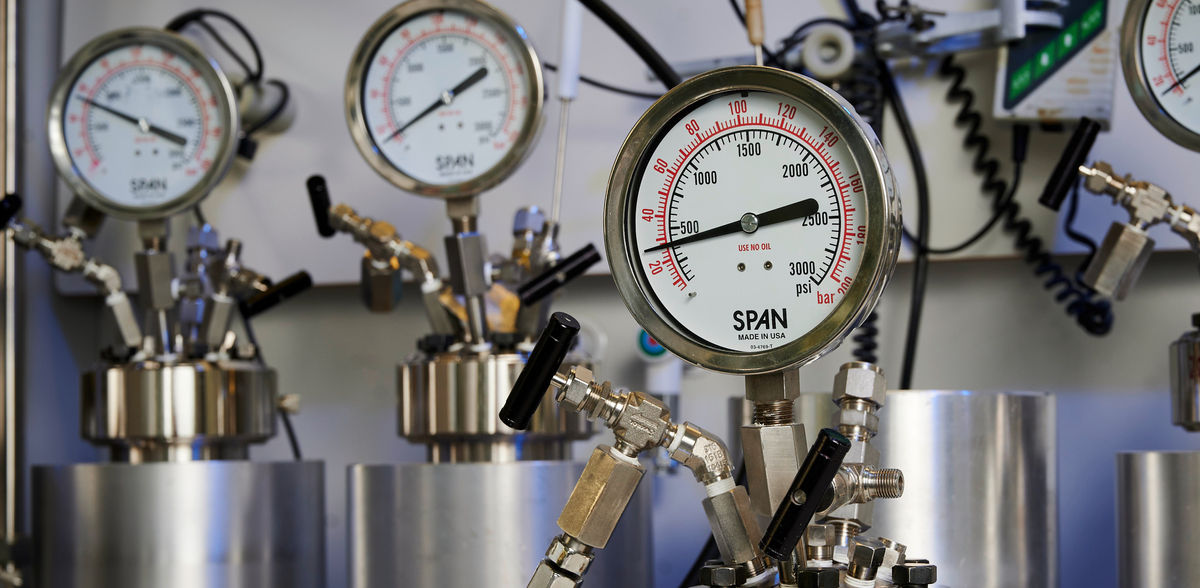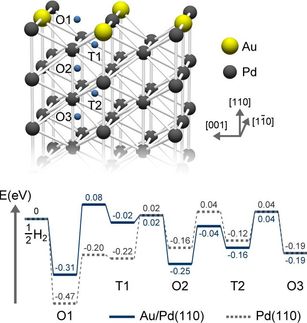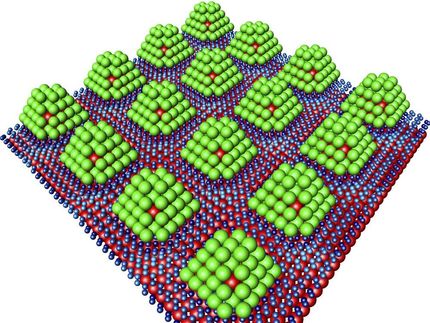Hydrogen march! The Energy Carrier of the Future is Obtained at LIKAT from a Simple Ester
Unexpectedly powerful start
In sustainable energy concepts, hydrogen (H2) is considered a favorite. The gas is volatile and explosive, which is why chemistry labs around the world are exploring ways to store it. In the journal NATURE CATALYSIS, a group led by Dr. Henrik Junge at LIKAT in Rostock, Germany, proposes the methyl ester of formic acid, Methyl formate, as an alternative hydrogen storage. In their research, this substance proved to be a potent complement to two known chemical H2 storage media: formic acid and methanol. And in one respect, methyl formate leaves the two surprisingly far behind: in the speed with which this substance releases the hydrogen again. Especially in the first phase of the reaction.
Methyl formate, the methyl ester of formic acid, is one of the world's bulk chemicals, with annual production of around six million metric tons. It is used, for example, as a solvent for greases and acrylic resins, as a refrigerant and also as an intermediate stage in syntheses in organic chemistry. It is still produced under high pressure on the basis of fossil raw materials from methanol and carbon monoxide.
Use in a CO2-neutral cycle
But there are already sustainable methods of its production, namely catalytically using CO2 from the air, hydrogen and methanol, which can also be produced CO2-based long ago. "Thus, our proposal to store hydrogen chemically in methyl formate is CO2-neutral and meets the criteria of a circular economy," says Prof. Dr. Matthias Beller, LIKAT director and one of the main authors of the NATURE CATALYSIS paper. This is because the release of the hydrogen ultimately produces only as much CO2 as was previously used for its storage in the methyl formate.
In a climate-neutral energy economy, chemical storage for hydrogen is recommended wherever wind and sun are renewable sources that produce electrical energy sustainably but intermittently and, above all, independently of demand. "Surplus" electricity produces "green" hydrogen via electrolysis, which is catalytically converted for the purpose of storage. When needed, hydrogen is chemically released from storage again to feed fuel cells or other energy systems.
Advantages compared to previous storage systems
Until now, formic acid, methanol and ammonia have been the main chemical H2 storage options. "Methanol and ammonia have a sufficiently high hydrogen content," as Dr. Henrik Junge explains, "but have been classified as toxic and flammable by UN bodies." And formic acid has a somewhat lower H2 density than methyl formate, which is also a non-toxic substance that is unproblematic to handle, he adds.
Fifteen years ago, LIKAT chemists succeeded for the first time in obtaining hydrogen from formic acid at low temperatures down to room temperature. This virtually opened the way to practical chemical storage of this basic substance and gave a significant boost to research in this field worldwide. Dr. Junge: "In the search for other H2 sources, it was obvious to see to what extent methyl formate, which is formed from formic acid and methanol by splitting off water, would also be suitable as a storage medium." It's just that no one had done it yet.
Unexpectedly powerful start
The release of hydrogen from a methyl formate-water mixture is chemically a dehydrogenation. At LIKAT, this takes place in the pressure reactor in the presence of a ruthenium catalyst. The amount of hydrogen gas produced can be precisely read from the pressure generated in the reactor.
Under the conditions in the test series, formic acid released the hydrogen much more slowly. Dr. Junge: "With aqueous methanol, the release runs a little faster, but soon stops as chemical equilibrium is established." In the methyl formate-water mixture, however, the pressure shot up immediately and significantly. "This was surprising and basically could only be explained if we attributed a previously unknown mechanism to the reaction."
Methyl formate released hydrogen 20 times faster than methanol and five times faster than formic acid. Such values have consequences for subsequent practice. Says Dr. Junge, "If your process can provide an energy carrier 20 times faster than usual, you can, for example, plan your plant to be correspondingly smaller or supply more users than planned." The LIKAT chemists are securing their claim to practical relevance through cooperation with the APEX Group, a company in Rostock-Laage specializing in hydrogen technologies. As a result, two patents have been filed.
Search for the mechanism
"Anyone who presents such surprising values must also be able to uncover the molecular mechanism behind them," as Dr. Junge says. The group discussed their findings with theorists at LIKAT. Their calculations of the reactions in turn prompted new laboratory experiments.
The group had intermediate products of the reaction, so-called intermediates, investigated using NMR and X-ray structure analysis, among other methods. This part was the responsibility of Dr. Elisabetta Alberico from the Research Institute for Chemistry and Molecular Biology in Sassari, Sardinia, who was a guest scientist at LIKAT in Rostock. She succeeded in identifying those species in the catalytic cycle that accelerate the release of H2 and also play a decisive role in the reaction in other respects - findings that are in turn needed when it comes to optimizing the chemical process.






























































